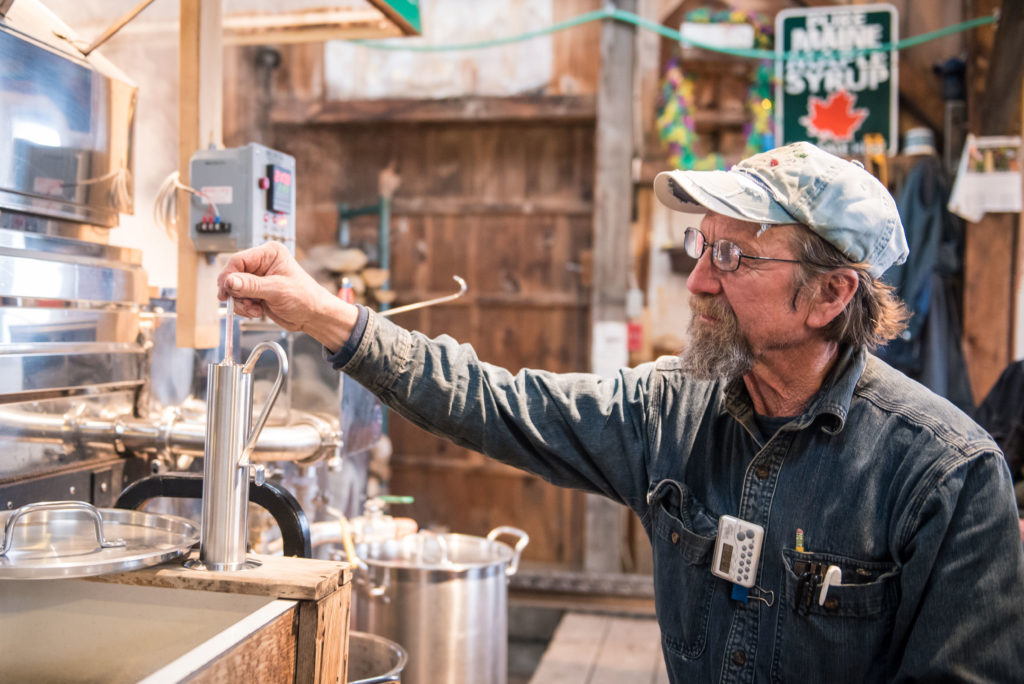The Sugar Maple Tree
Maine maple syrup is a delicious natural sweetener from the sap of maple trees, specifcally, sugar maples, a hearty tree found in Northeastern American forests. Saplings are vigorous. Young trees—starting as early as 40 years old—become a reliable resource on Maine farms, along with the surrounding wildlife habitat.
Sap Collection
Sap collection occurs at certain times of year, the most common is the late winter and early spring freeze-thaw cycles. It’s not too warm during the day—enough to smell spring in the air. Visual cues are slight snow melts, and mud puddles during the day, which may freeze slightly overnight. The precise start date for sap collection and boiling syrup can vary from one maple producer to another. For example, the sap collection in southern Maine often starts a few weeks before northernmost Maine. Wherever maple sugarhouses are located, it is a non-stop effort once the sap flows.
The constant attention from tree, to tap, to sugarshack, and packaging helps ensure a quality product from start to finish. For example, sugarmakers will carefully examine the sap. Some collect sap in a food-grade safe bucket. Or sap travels in a gravity-fed network of tubes where it collects in large storage containers. Sugarmakers keep sap cool for quality. Then a filter removes any debris (such as moss, flecks of bark). Finally, it slowly evaporates to the necessary consistency and sugar content. Special tools, such as refractometer, measure the sugar level. Maple producers aim for a density greater than 66 percent Brix (sugar content in a liquid) at 68 degrees Fahrenheit. Finished syrup is packed into sterilized containers, or further transformed into different maple confections.
Pure Maple Syrup: Delicate Details
The attention to detail reveals why maple syrup makers are proud to provide pure maple syrup: sugaring is a delicate process. While the sap may come from Maine’s wilderness or rows of trees abutting fields, sugaring is not a ‘wild guess’. It requires technique, time and precision. There are no added stabilizers when creating pure maple syrup. The skills from the sugarbush to the sap collection and syryp making allow sugarmakers to produce the most desirable pure maple syrup.

Year-Round Efforts and Enjoyment
Collecting sap and making syrup are especially busy times on the sugarmaker’s schedule. Many even open their sugarhouses to tours, and offer public visitors a chance to watch the syrup making process each spring. There’s still plenty to accomplish on the to-do list throughout the year. The remainder of the year, sugarmakers typically dedicate time to supporting their business. For some farms, producing maple syrup is one of several sources of business income. For many they spend the off-season learning about best practices and caring for the trees, equipment and products. And of course, they will spend plenty of time helping their customers find just the right pure Maine maple product. For example, delicious maple syrup, pressed sugar candies, and maple crème, or even granules. The delicious flavors are worth the effort and the wait!
